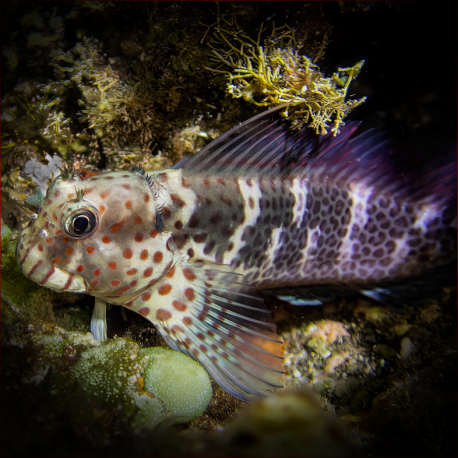More info
Datasheet
| Minimum Tank Size | 300 litres / 79.25 US gallons |
| Maximum Size | 11.0cm / 4.33inches |
| Reef Compatible | Reef safe with caution |
| Temperament | Might be aggressive towards food competitors |
| Temperature | 22.2°C / 71.96°F - 25.6°C / 78.08°F |
| Specific Gravity | 1.020-1.025 |
| Carbonate Hardness | 8-12 |
| pH | 8.1-8.4 |
General Description
Cirripectes randalli, also known as the Toothcomb Blenny, is a species within the Blenniidae family, specifically the Cirripectes genus. These fish are characterized by their oblong shape, long dorsal fin, and often lack vibrant coloration. They typically grow up to 11.0 cm in size and are found in the Western Indian Ocean, specifically in Mauritius and Cargados Carajos Shoals, with recent reports from Reunion.
Aquarium Suitability
Considered suitable for aquariums, Cirripectes randalli has average hardiness and a recommended minimum tank size of 300 liters. They can be housed in both small and large aquariums but require a well-established environment with ample algae for grazing. It is essential to ensure the presence of algae-rich rocks and stones in the tank or supplement their diet with foods like seaweed, spirulina, and zooplankton.
Demands, Care, and Hardiness
This species has an average level of hardiness and is known to thrive in a well-maintained aquarium where they can feed on algae. Keeping them in pairs is advisable, with one male and one female. They may exhibit aggression towards other fish competing for food resources, necessitating cautious tank-mate selection.
Reef Suitability
Cirripectes randalli is classified as reef-safe with caution. While they can generally coexist in a reef environment, their potential aggressiveness towards food competitors should be considered when introducing them to a reef tank.
Aquarium Setup
When setting up an aquarium for Cirripectes randalli, ensure the water conditions are within the preferred range: a carbonate hardness (KH) of 8-12, pH of 8.1-8.4, specific gravity (SG) of 1.020-1.025, and a temperature between 22.2-25.6°C. Provide ample hiding spots, algae-covered surfaces, and a well-oxygenated environment to mimic their natural habitat.
Behaviour
Toothcomb Blennies are known for their intriguing personalities, despite their unassuming appearance. They may exhibit territorial behavior, especially during feeding times, and are active bottom-dwellers that spend much of their time grazing on algae.
Feeding and Diet
The recommended diet for Cirripectes randalli includes macroalgae such as seaweed or nori, microalgae like spirulina, and zooplankton such as Cyclops and pods. Regular feeding and supplementing their diet with algae-rich foods are crucial for their health and wellbeing.
Habitat and Distribution
In their natural habitat, Toothcomb Blennies inhabit rocky areas with ample algae growth in the Western Indian Ocean. They are primarily found in Mauritius and Cargados Carajos Shoals, with recent sightings in Reunion. Their preference for algae-rich environments influences their care requirements in aquarium setups.
Dimorphism and Captive Reproduction
No information available regarding dimorphism or captive reproduction of Cirripectes randalli.

